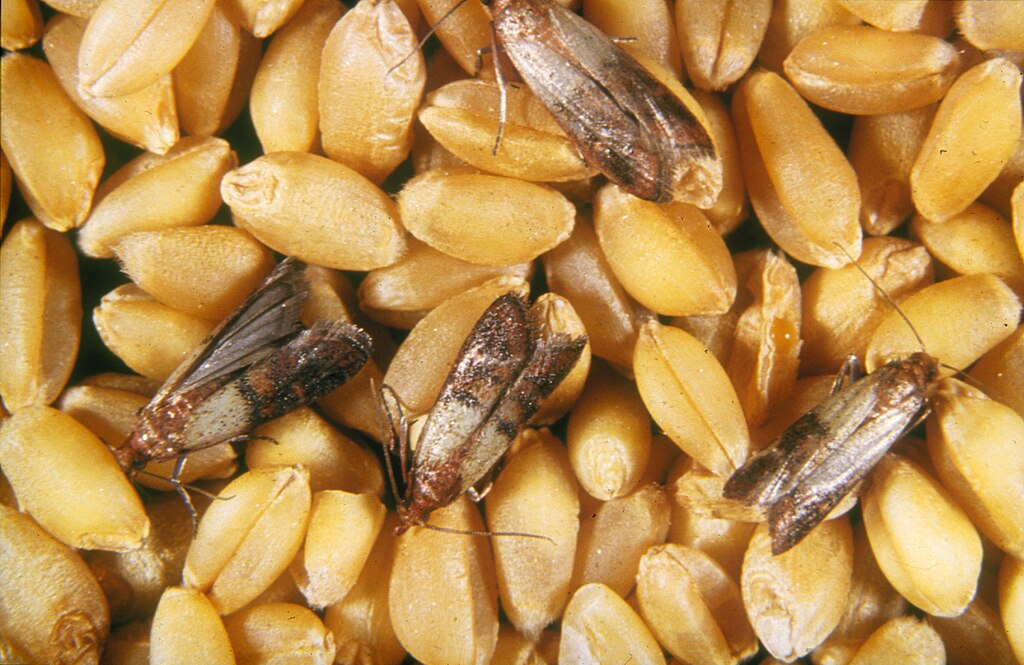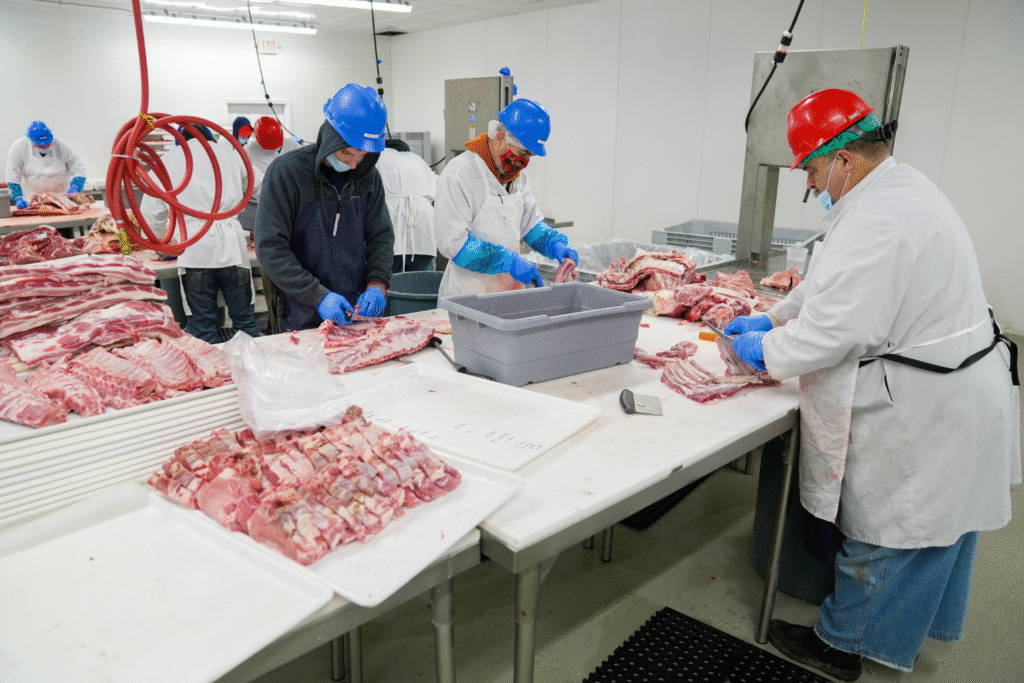Strange things get into our food supply.

In the United States, thousands of food products get recalled each year for reasons that go beyond spoiled milk or mislabeled allergens. One of the riskiest culprits is foreign object contamination, things like plastic fragments, metal pieces, or even insects and wood bits sneaking into packaged food. These intrusions often result from manufacturing glitches, broken machinery, or contamination earlier in the chain.
While many recalls stem from microbial or allergen issues, foreign objects remain a persistent hazard. In 2025 alone, notable recalls have cited metal shards, plastic bits, and even wood slivers in products distributed across several states.
1. Plastic fragments are the most frequent offenders.

Plastic is everywhere in packaging, conveyor belts, seals, and gloves, and that ubiquity makes it a common risk. In many recalls, bits of plastic from frayed belts or shredded packaging make their way into the food. According to a review study, over the past 20 years, foreign materials are behind about one in ten recalls, and plastic fragments top that list, as reported by PMC.
Because plastic is lightweight and sometimes translucent, detection can be tricky. Manufacturers use X ray, optical scanners, and visual inspections, but small flakes may slip through. Once consumer reports arise, recalls follow fast to prevent injury or choking.
2. Metal shavings often come from failed machinery.

Metal contamination tends to originate in the plant, worn bearings, broken blades, or failing fasteners shedding flakes into the production line, as discovered by DeBeer’s analysis of U.S. recalls. Mechanical breakdowns interacting with food flows create transmission paths for metal parts.
When metal bits enter food, they carry serious injury risk like cuts, dental damage, or internal harm. Many recalls are triggered once a customer finds a hard fragment while eating, prompting swift investigation and removal of products to prevent further harm.
3. Insects and bug parts sneak past inspections.

It’s not just science fiction, bug parts or entire insects sometimes make their way into packaged goods. Field contamination, storage issues, or lapses in pest control allow insects to infiltrate raw materials or finished products. In news coverage, recalls have been issued after discovering insects in soups, broccoli blends, or grains, as reported by CBS News.
These cases often come to light after consumers complain about crawling bits or seeing wings and legs. The reputational damage is huge. Factories respond by tightening pest control, improving screening nets, and increasing sampling inspections in heavily processed goods.
4. Wood and foreign plant materials show up too.

Wood fragments can slip into food more easily than most people realize. In 2024, Foster Poultry Farms recalled nearly four million pounds of its chicken corn dogs after pieces of wood were found embedded in the batter. According to the U.S. Department of Agriculture’s Food Safety and Inspection Service, the recall was classified as a Class I risk, meaning the contamination could cause injury if consumed. Investigators traced the source to wood debris likely entering during bulk transfers between storage and production equipment.
These kinds of recalls show how fragile the production chain can be. Splinters or slivers often escape detection until consumers bite into them. Such incidents push factories to adopt stricter pallet use policies, install additional screening stations, and ensure that wood surfaces are kept separate from food contact zones to prevent repeat contamination.
5. Stones, rocks, and grit contaminate dry goods.

Bulk grains, spices, and dried beans transported in sacks or trucks can carry stones or grit that slip in with the load. If cleaning and screening are inadequate, these hard particles make it into final packaging. In the U.S., recalls over extraneous materials have historically included rocks in cookies or soups.
These solid objects pose choking or tooth damage risk. Standard processing lines use destoners, magnetic separators, and optical sorters. When those fail due to wear, calibration issues, or oversight, the unwanted debris stays hidden until consumer complaints erupt.
6. Packaging bits and labels inadvertently end up in product.

Sometimes the problem isn’t in the food itself but in the packaging. Bits of torn labels, shrink wrap, liner scraps, or packaging adhesives can flake off into the food. In high speed lines, torn paper or silicone from seals becomes a contamination source.
Because these fragments often blend in, detection is challenging. Spot inspections and metal sensing may not catch them. Once consumer reports surface, brands conduct root cause analysis, adding filter meshes and packaging audit checks to their quality systems.
7. Adhesives and sealant materials may detach.

Industrial adhesives, waxes, or sealants used in closures and cartons can degrade or flake, especially under temperature stress. Those particles sometimes migrate into food compartments. While less common than solid fragments, chemical or physical contamination from adhesives is still a recall cause.
These incidents often arise when the glue bond weakens or adhesive formulations are changed. Factories respond by reviewing materials compatibility, switching to food grade adhesives, and monitoring environmental conditions like humidity and heat that stress glue joints.
8. Glass shards pose rare but severe risks.

Glass contamination is rarer but alarming, broken bottles, jars, or light fixtures shedding fragments into nearby lines. When glass enters food, the risk is severe, cuts, internal injuries. Processing zones usually exclude glass close to product lines, but human error or accidents sometimes cause breakage.
After such recalls, facilities inspect glass panels, light covers, and containers near product zones, adopt breakage barriers, and enforce stringent cleanups. Glass incidents often prompt urgent shutdowns due to safety severity.
9. Bone fragments slip through meat processes.

In meat and poultry processing, small bone shards or cartilage sometimes persist despite trimming and cutting. In ground meat, bone flecks may remain hidden. These are categorized as foreign objects and are a common cause of meat recalls by USDA’s Food Safety Inspection Service.
Consumers may find hard fragments while chewing, causing injury or alarm. Manufacturers counter by improving deboning machines, adding bone detectors, and increasing X ray screening in final ground product to catch even tiny fragments before shipment.
10. Cross product migration causes unexpected contamination.

Sometimes a foreign object originates in one product stream but migrates into another through shared equipment or cross flows. For example, fragments from a cereal line might contaminate a snack line via shared conveyors or handling. These unexpected cross contaminations have led to recalls when fragments appear in unrelated products.
To mitigate this, plants often segregate lines, schedule cleaning between batches, and audit line layouts to reduce cross flow. When recalls occur, tracing migration paths is essential to prevent recurrence and rebuild consumer trust.
